The table below provides basic information about the float, including primary sensors, mission parameters and current status of profiles.
| Institute | CSIRO |
| Principal Investigator | Susan Wijffels |
| Pressure Sensor | Druck (serial number=9614) |
| CTD Sensor | APEX-SBE-41 (serial number=2682) |
| CTD Sampling Mode | Burst Sampler |
| Controller Board | APF 8 |
| Additional Sensors/Software | None |
| Park Depth | 1000 m |
| Profile Depth | 2000 m |
| Launch Date | 13-04-2007 |
| Number of D-moded Profiles | 104 |
| Calibration Date | 12-08-2010 |
| Pressure Drift | Surface Pressure Offset unknown and uncorrectable from profile 1 onwards, TNDP float, QC=2, serial number < 2324175 |
| Salinity Drift | No salinity drift detected. |
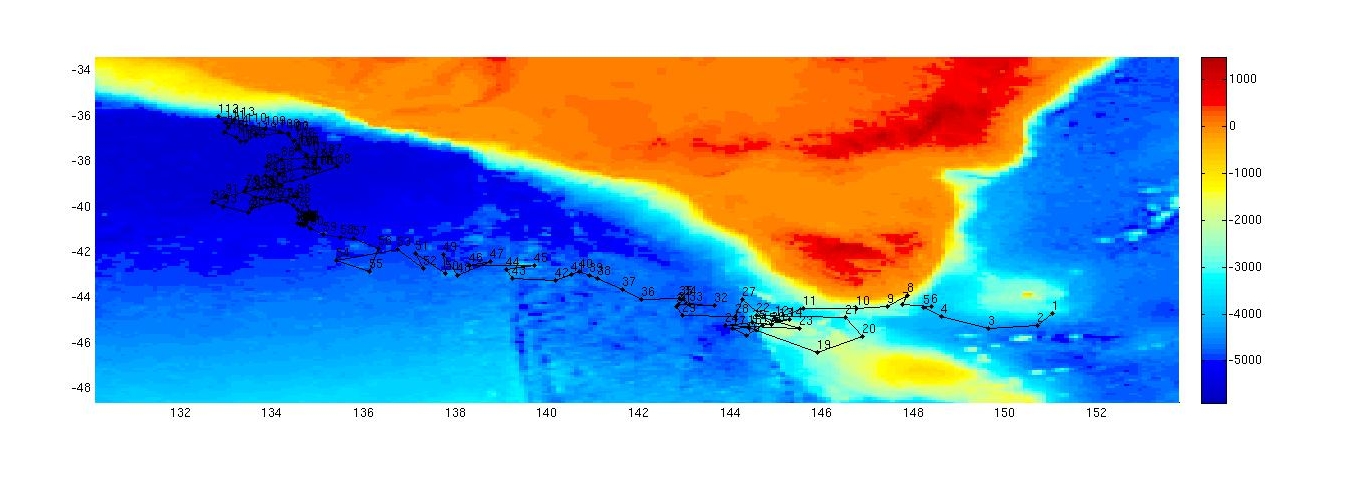
This float is located to the south of Tasmania, in a region bounded by 134 to 152 ºE and 40 to 47 ºS.
The surface pressure for this float is shown in the plot below.
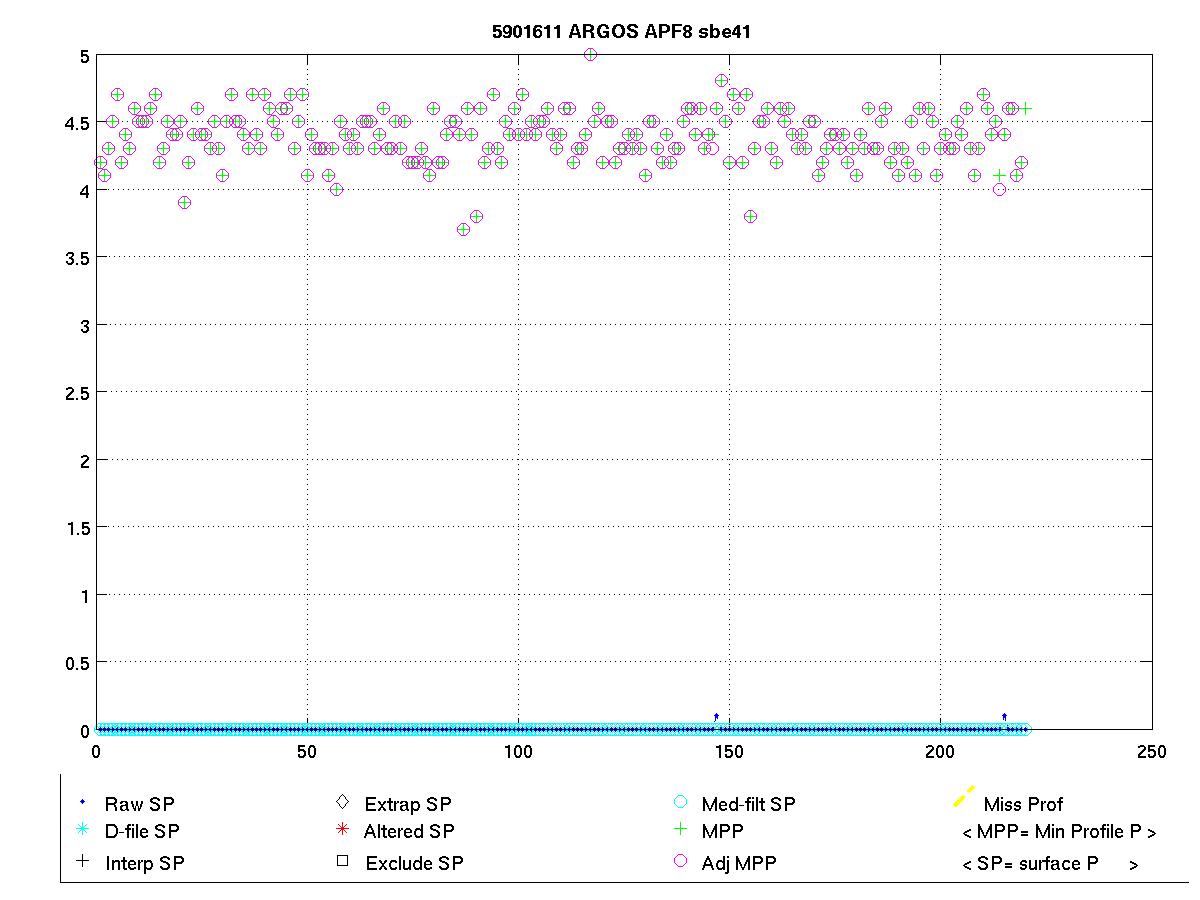
Potential Temperature-Salinity (a), Location (b, Max Temperature (c) and Sea Surface Salinity (d) plots located below.
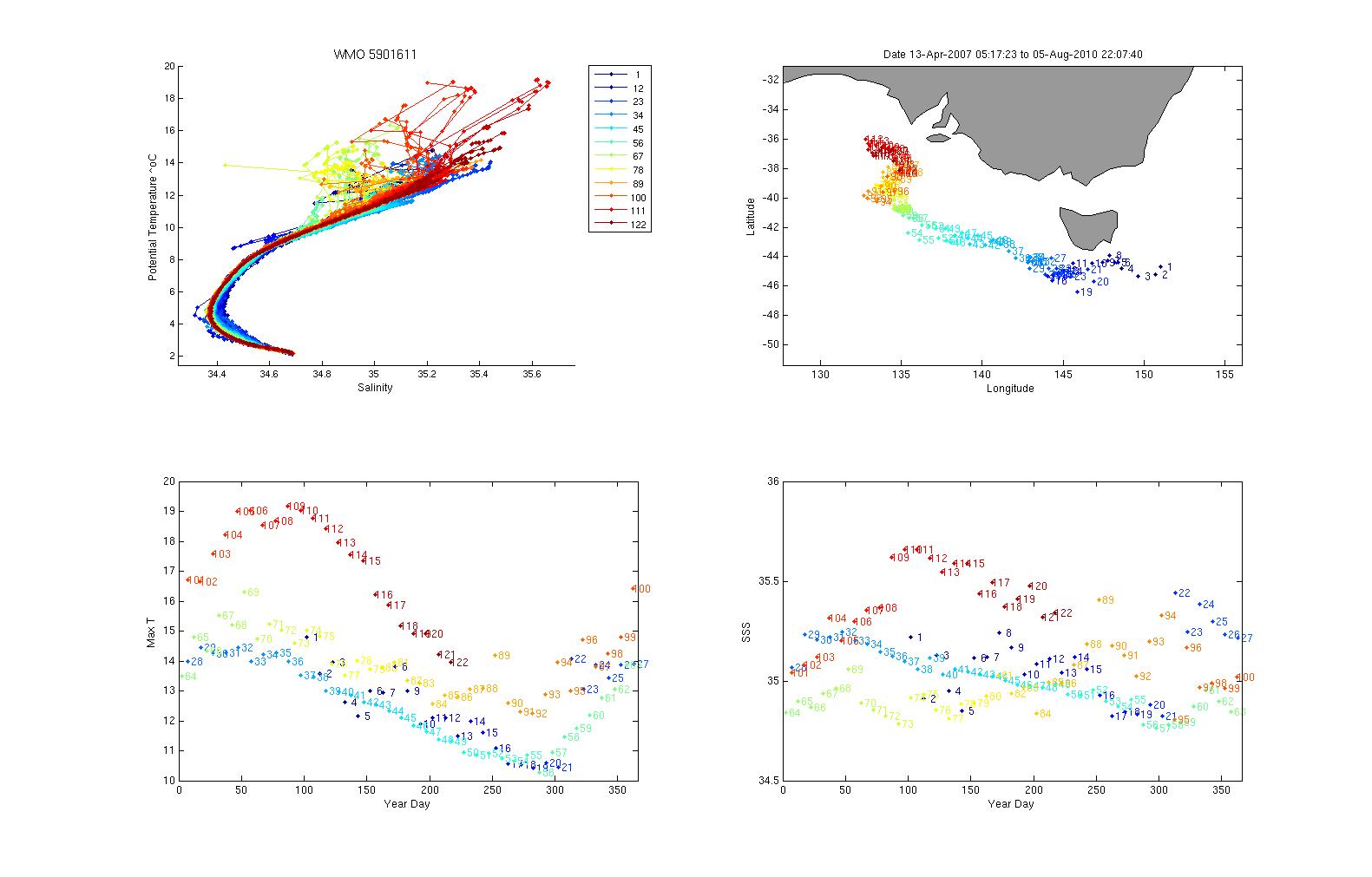
Surface temperatures generally varied between 10 and 15 ºC and surface salinities from 34.75 to 35.5.
The plot below shows the potential-temperature/salinity relationship for the deepest theta levels where the relationship between the two parameters should show the least variation.
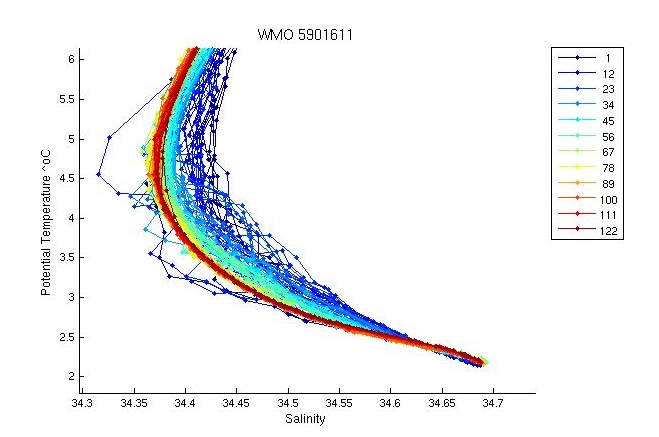
The profiles are reasonably distributed through most of the water column, with quite a bit of variability occurring around the salinity minimum. At depth, the profiles look reasonable.
The two plots below show a). the location of this float (black circles) in relation to the position of other nearby argo floats (coloured circles) and b). The potential-temperature/salinity curve for this float (in black) compared to nearby argo floats (coloured).
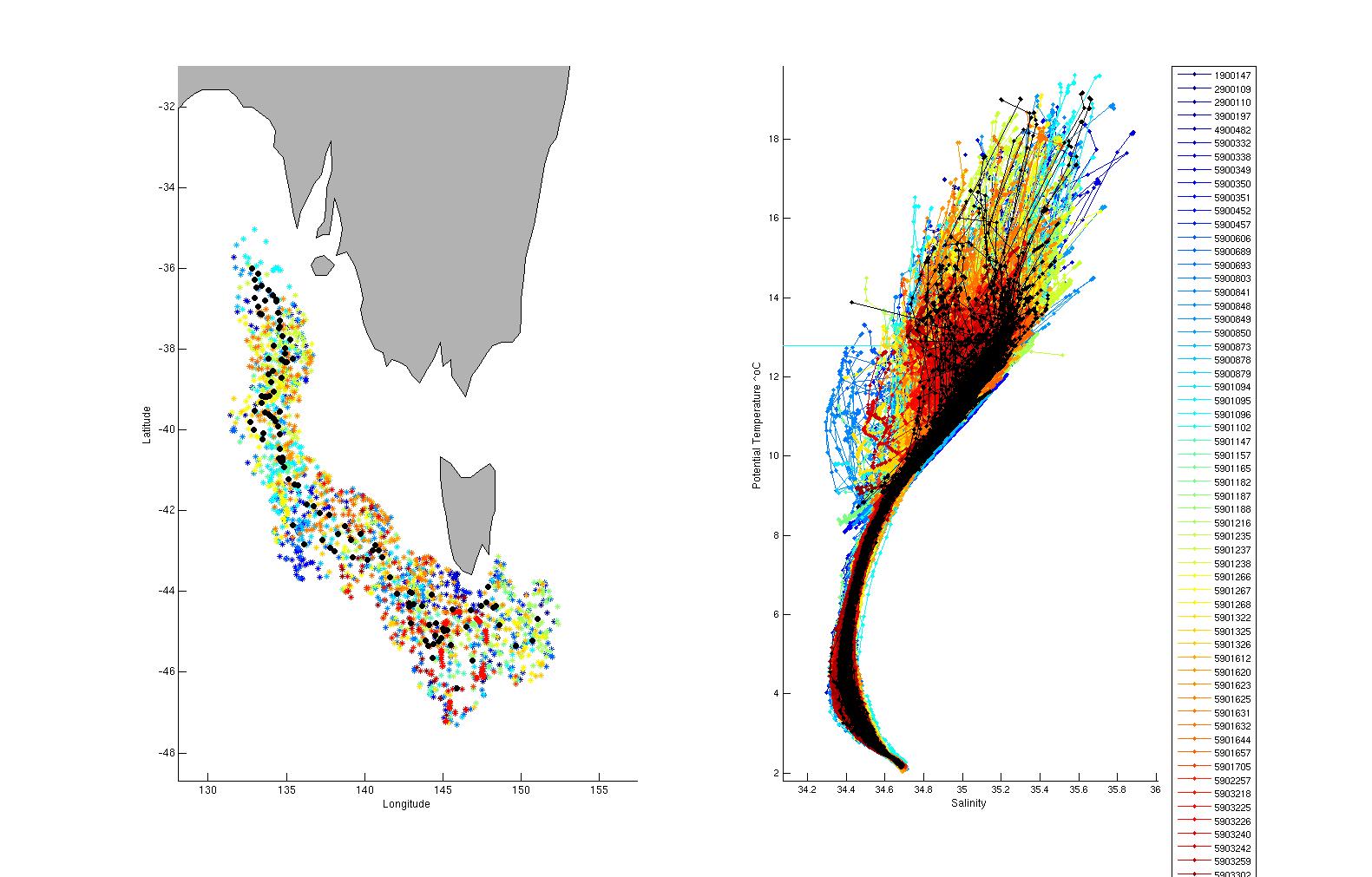
The potential-temperature/salinity relation for the deepest theta levels for this float (in black) and nearby argo floats (coloured) is displayed below.
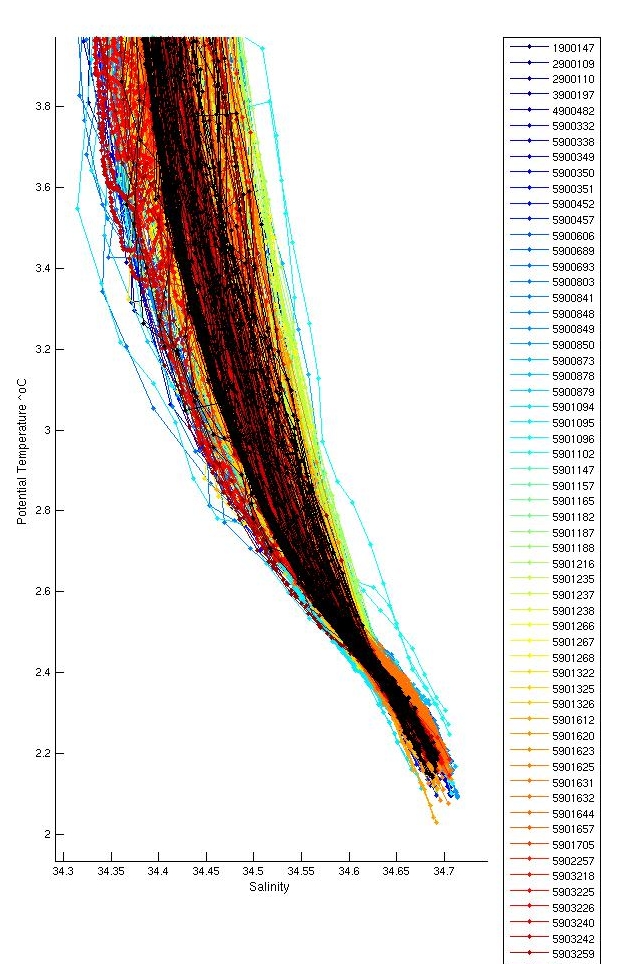
Comparison with neighbouring profiles shows that the profiles for this float are within the envelope of neighbouring profiles. At depth, profiles are in the middle of the group and look okay.
There were inversions in profiles 1 (thermal lag spike, not significant), 16 (at 90 m, not significant), 19 (310 m, not significant) and 49 (350 to 375 m, not significant).
Salt hooks were located in profiles; 2,4,6,9,10,11,12,13,14,16,18,19,20,23,24,25,26,30,33,39,42,43,46,48,50,52,54,56,58,60,63,65,67,69,74,76,78,80,82,84,86,88,89,93,95,97,99,102,104. These were flagged as QC 4 for both T & S.
Profiles 15, 16, 42 and 43 have bad data. Profile 8 is shortened, flagged last few values as QC=4 for both T & S as these looked suspicious. Flagged spike in salinity minimum in profile 7 as QC=4.
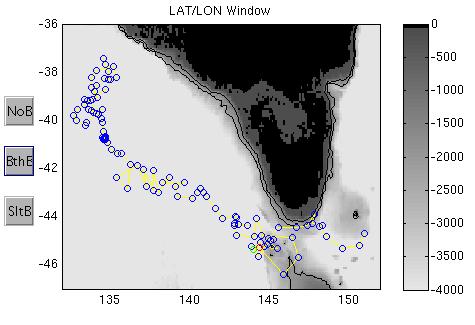
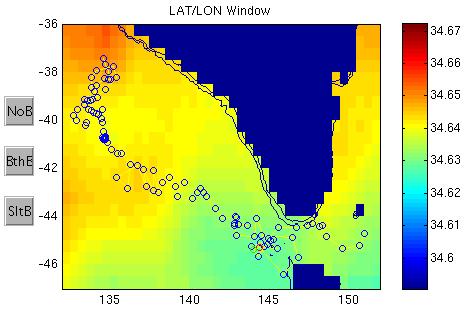
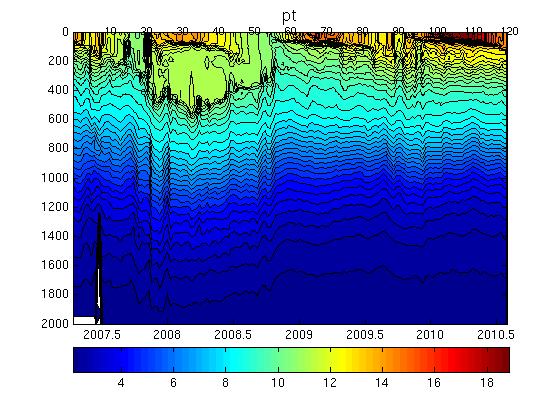
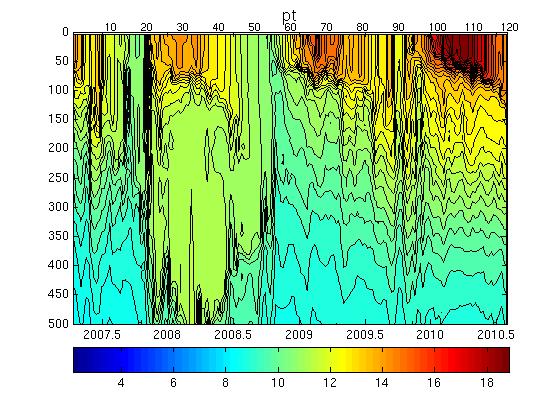
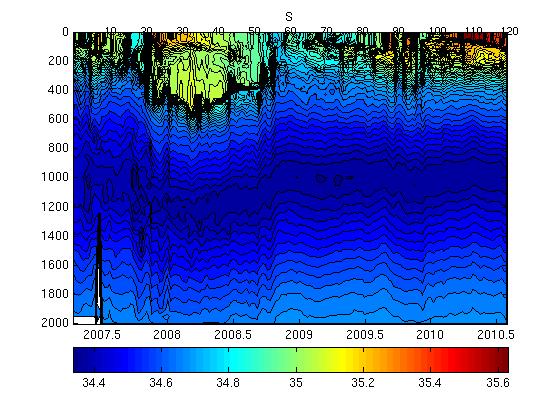
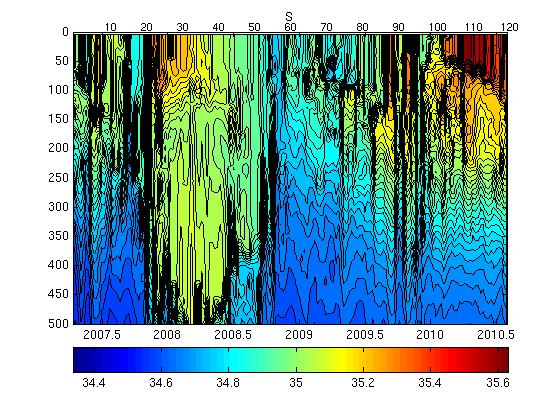
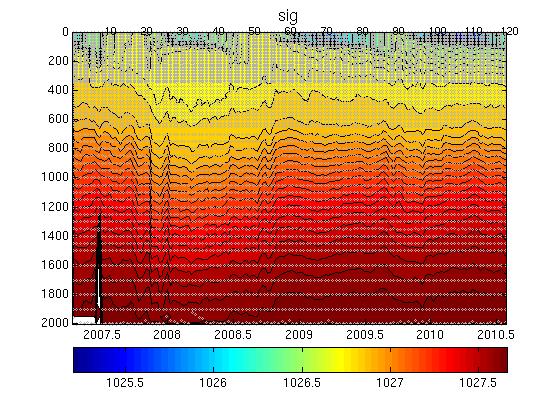
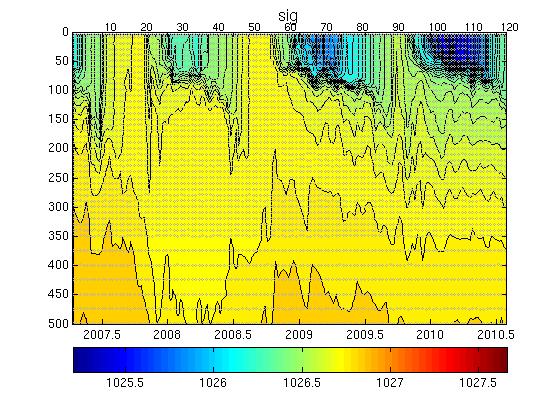
The plot below shows the analysis of salinity drift using the WJO/OW software.

This float requires no correction.
The four plots below show the salinity anomalies on theta surfaces compared to (a) the Gouretski and Kolterman climatology, (b) the CARS (CSIRO Atlas of Regional Seas)/WOA (World Ocean Atlas) climatology, (c) the anomalies within the float series itself, (i.e. the salinity anomaly of each profile from the mean profile average for the float and (d) the raw float salinity compared to the CARS and G&K climatological salinity on a deep theta surface.
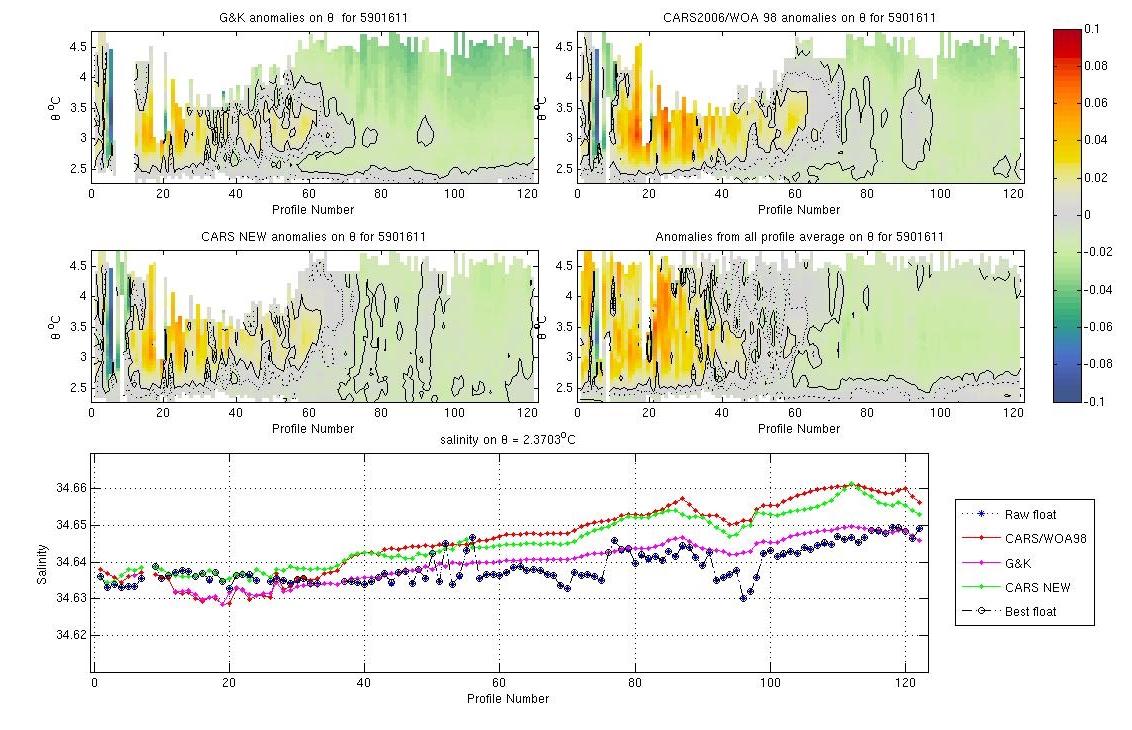
This float is close to Gouretski and Kolterman but is offset from new CARS by 0.005. The float may be crossing from one side of a front to the other. The float data looks okay.
The plots below show the raw float salinity data (solid blue line) compared to neighbouring argo floats (coloured symbols) on a deep potential temperature surface. The locality map shows the location of the profiles for this float and for neighbouring floats.
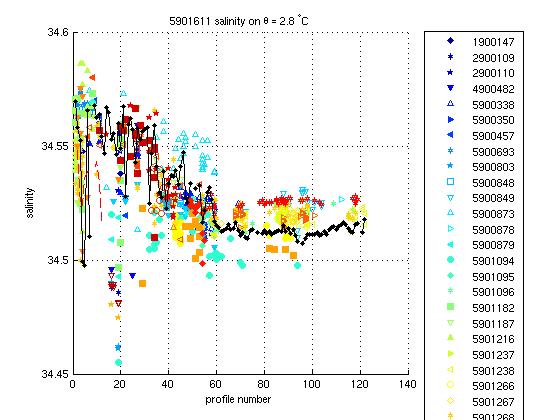
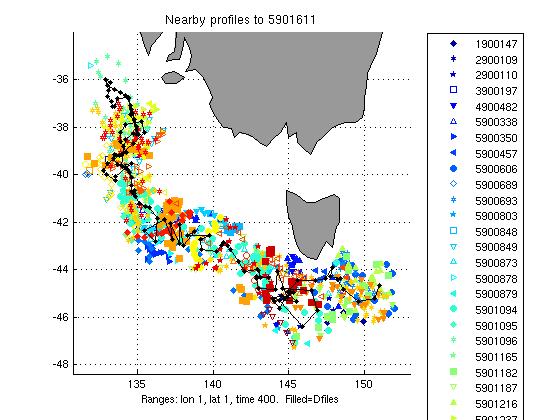
This float is in the middle of the series. No drift correction required. There is wide variability in the neighbouring data, spread of +- 0.025.
This float required no salinity drift correction.
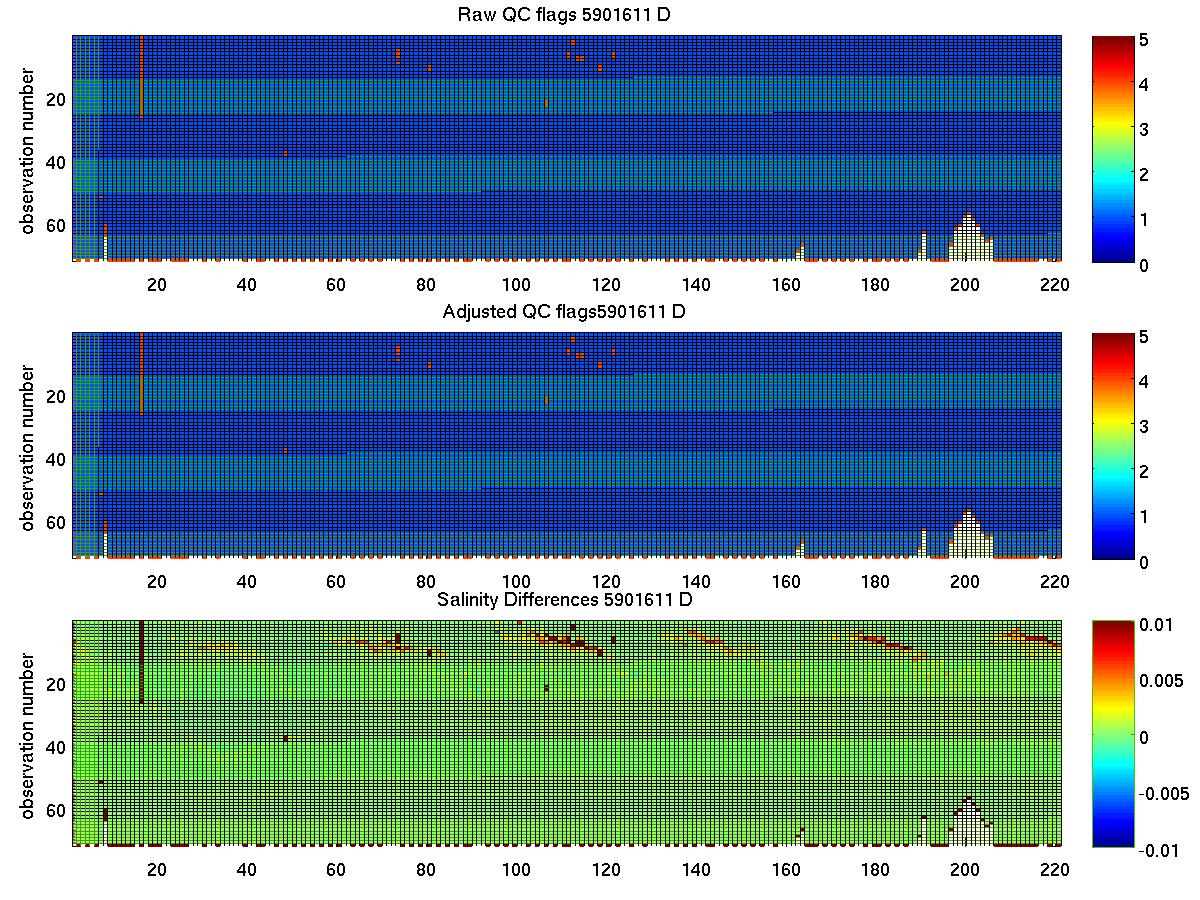
The plot below summarises the QC flags and salinity differences for the raw and adjusted salinity fields in the final delayed mode files submitted to the GDAC.
Created 12-08-2010